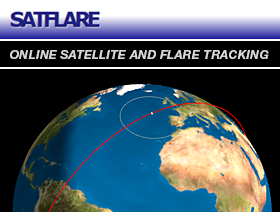Inside Spacecraft Design
 Space Architecture: Interview With Marc M. Cohen
Space Architecture: Interview With Marc M. Cohen Making Of India's Space Shuttle - The Inside Story
Making Of India's Space Shuttle - The Inside Story Sierra Nevada Corporation Unveils Cargo Version of Dream Chaser
Sierra Nevada Corporation Unveils Cargo Version of Dream Chaser Reusable Launch Vehicles: An Indian Perspective
Reusable Launch Vehicles: An Indian Perspective What Constitutes Failure?
What Constitutes Failure? Researchers Develop Water Splitting Solar-Thermal System to Produce Hydrogen Fuel
Researchers Develop Water Splitting Solar-Thermal System to Produce Hydrogen Fuel Novel Thrusters Being Developed for Nanosats
Novel Thrusters Being Developed for Nanosats Cella Energy Hydrogen Pellets: Fuel Storage And Radiation Protection
Cella Energy Hydrogen Pellets: Fuel Storage And Radiation Protection NASA Discovery Raises Concerns about Fire Safety in Space
NASA Discovery Raises Concerns about Fire Safety in Space CAMRAS: NASA’s CO2 and Moisture Removal System Ready for Final Tests
CAMRAS: NASA’s CO2 and Moisture Removal System Ready for Final Tests Dreamliner Battery Woes Have ISS Implications
Dreamliner Battery Woes Have ISS Implications Space Systems/Loral: A Case Study in Ineffective Incident Investigation
Space Systems/Loral: A Case Study in Ineffective Incident Investigation Flexure to Put NASA Thermal Insulation Technology to Work
Flexure to Put NASA Thermal Insulation Technology to Work TDRS-K, Boosting Communications in Space
TDRS-K, Boosting Communications in Space Russian Pioneers of Space Safety: Beyond Mitigation
Russian Pioneers of Space Safety: Beyond Mitigation Do We Really Need So Many Satellites? US Agency Admits Underutilizing Resources
Do We Really Need So Many Satellites? US Agency Admits Underutilizing Resources NASA, ESA Try Out "Interplanetary Internet" Technology
NASA, ESA Try Out "Interplanetary Internet" Technology Selective Laser Melting: The Future of Space Manufacturing
Selective Laser Melting: The Future of Space Manufacturing Where NASA Tests Spacecraft Landing, the Old Fashioned Way
Where NASA Tests Spacecraft Landing, the Old Fashioned Way  New York to Tokyo By Way of Outer Space
New York to Tokyo By Way of Outer Space Knot: The Oldest Space Technology
Knot: The Oldest Space Technology 55th Anniversary of the Dawn of the Space Age
55th Anniversary of the Dawn of the Space Age NanoThor Aims to Fling NanoSats into Orbit
NanoThor Aims to Fling NanoSats into Orbit "Massively Redundant" Water Walls Spacecraft To Use Water for Everything
"Massively Redundant" Water Walls Spacecraft To Use Water for Everything NASA Funds Study of Sideways Flying Supersonic Plane
NASA Funds Study of Sideways Flying Supersonic Plane  NASA and ESA to Test Laser Communication
NASA and ESA to Test Laser Communication  Growing Trend Towards Accessible Space
Growing Trend Towards Accessible Space Open Source Cubesat Next Phase in DIY Space Access
Open Source Cubesat Next Phase in DIY Space Access Flying Near the Edge of Space for 57 Years
Flying Near the Edge of Space for 57 Years The X-37B Space Plane: Where is it now?
The X-37B Space Plane: Where is it now? Skylon Spaceplane Tests Key Technology
Skylon Spaceplane Tests Key Technology Blue Origin Activities Increase Visibility
Blue Origin Activities Increase Visibility MicroThrust Ion Engine Could Place Cubesats in Lunar Orbit
MicroThrust Ion Engine Could Place Cubesats in Lunar Orbit American Spacecrafts in Display (Infographic)
American Spacecrafts in Display (Infographic) New Low Cost Fasteners Suitable for Hypersonic Flight
New Low Cost Fasteners Suitable for Hypersonic Flight SCaN Testbed to Expand Communications Capabilities
SCaN Testbed to Expand Communications Capabilities Understanding Communications Satellites
Understanding Communications Satellites  NASA's FLEX Studies Fire Extinguishing Techniques for Space
NASA's FLEX Studies Fire Extinguishing Techniques for Space James Webb Telescope Sunshield Deployment Mechanism
James Webb Telescope Sunshield Deployment Mechanism Airship Prototype Breaks Altitude Record
Airship Prototype Breaks Altitude Record Boeing X-37C Crew Vehicle
Boeing X-37C Crew Vehicle What is a Stall?
What is a Stall? NASA Starts Building First Space-Bound Capsule
NASA Starts Building First Space-Bound Capsule How Progress Cargo Spacecraft Works
How Progress Cargo Spacecraft Works Safety of Lithium Battery
Safety of Lithium Battery
Browse The Space Shuttle Columbia Disaster
 How We Nearly Lost Discovery: Returning to Flight After Columbia
How We Nearly Lost Discovery: Returning to Flight After Columbia Remembering Columbia
Remembering Columbia Learning from Columbia
Learning from Columbia Organizational Factors of the Columbia Disaster
Organizational Factors of the Columbia Disaster The Columbia Disaster and Space Program Safety
The Columbia Disaster and Space Program Safety  Columbia And The Day of Remembrance
Columbia And The Day of Remembrance Sixteen Minutes from Home
Sixteen Minutes from Home STS-107: Columbia's Lost Crew
STS-107: Columbia's Lost Crew Timeline of the Columbia Disaster
Timeline of the Columbia Disaster Columbia Disaster Recommended Reading
Columbia Disaster Recommended Reading Columbia Disaster Creative Works
Columbia Disaster Creative Works The Columbia Disaster In Perspective
The Columbia Disaster In Perspective![A trajectory analysis that used a computational fluid dynamics approach to determine the likely position and velocity histories of the foam (Credits: NASA Ref [1] p61).](http://www.spacesafetymagazine.com/wp-content/uploads/2014/05/fluid-dynamics-trajectory-analysis-50x50.jpg) Cause and Consequences of the Columbia Disaster
Cause and Consequences of the Columbia Disaster Lessons Learned from the Columbia Disaster
Lessons Learned from the Columbia Disaster Impact of Columbia Disaster on US Aviation Safety
Impact of Columbia Disaster on US Aviation Safety Living with Columbia: Interview with Mike Cianilli
Living with Columbia: Interview with Mike Cianilli Remembering the Columbia Crew, One Day at a Time
Remembering the Columbia Crew, One Day at a Time




